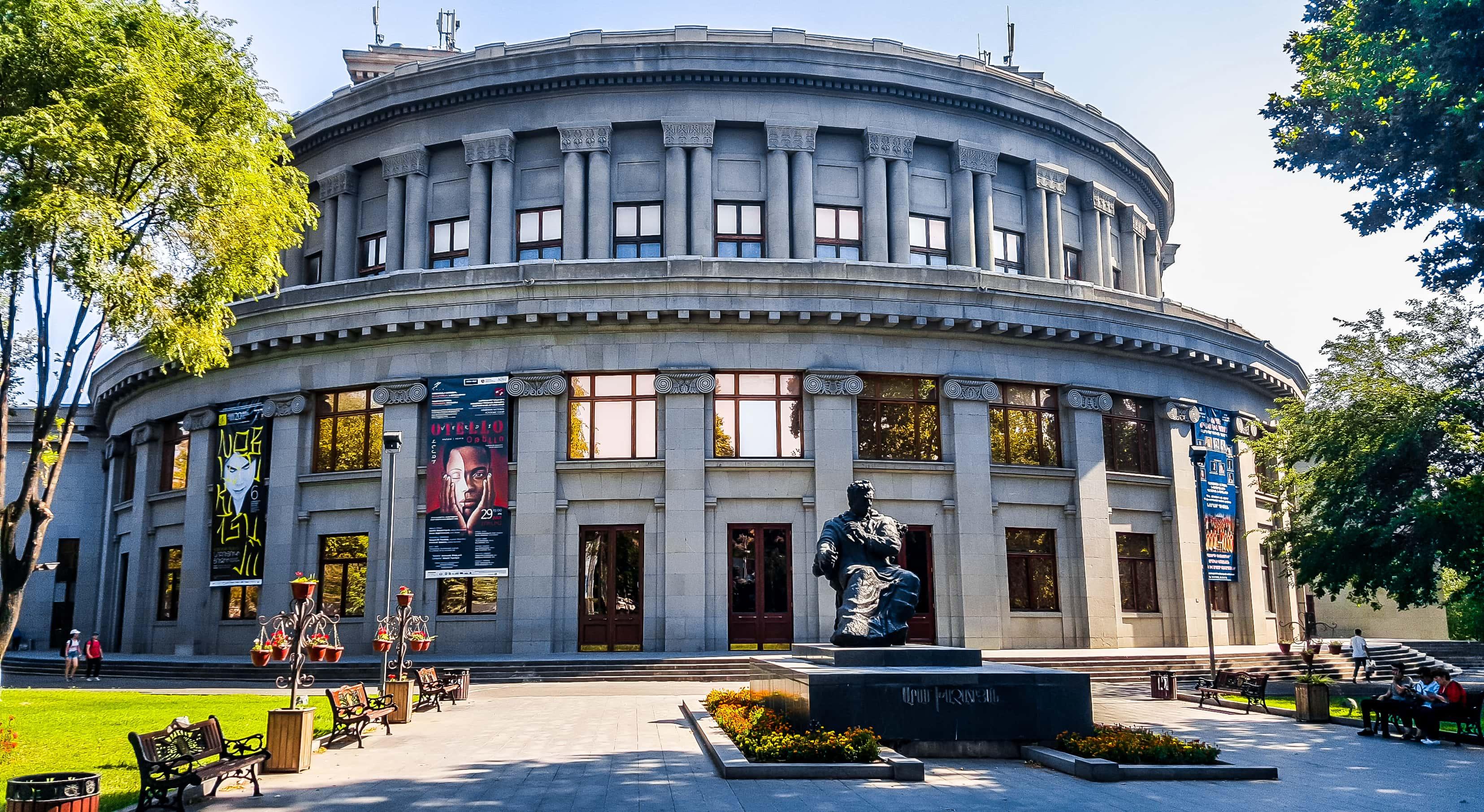Abandoned Churches and Monasteries You Should Visit

Armenia spans nearly 30,000 square kilometres, and across it lie more than 4,000 churches and monasteries! Dating back centuries and even millennial, many are abandoned, whispering tales of a storied past. Armenia’s forsaken sanctuaries aren't just weathered stone; they're living chronicles of devotion. As the first state to adopt Christianity as its official religion, faith played a pivotal role in shaping Armenian identity, establishing a unique spiritual and cultural heritage that found expression in the architecture of these sacred sites. Intricate carvings, frescoes, and khachkars (cross-stones) that have stood the test of time speak to the creativity of generations, echoing the nation’s soul. Read on to explore ten of Armenia’s most famous abandoned churches and monasteries organised by region.
Shirak Region
Situated in the village of Anipemza on the border of Armenia’s Shirak and Aragatsotn regions, you'll find the three-nave basilica of Yereruyk. This historical gem is only a few kilometres away from Ani, the remarkable tenth century capital of Armenia renowned as the “city of 1,001 churches.” Surrounded by an austere landscape, Yereruyk is one of the few structures in Armenian architecture to sit atop a stair-like pedestal. Its name finds its roots in the verb “to quiver.” Supported by pillars, it appeared to shake ever so slightly when viewed from a distance. After enduring a seventh century earthquake and the passage of time, the edifice now stands in a state of majestic ruins. Recognizing its cultural and historical significance, UNESCO in 1995 included the complex in its tentative list for potential designation as a world heritage site.
Aragatsotn Region
Saint Sarkis Monastery is a substantial monastic complex dedicated to the patron saint of young people and young lovers. It is situated near Ushi village in the Aragatsotn province, just 37 kilometres away from Yerevan. As a hub for spiritual education in ancient Armenia, it continues to hold prominence as a pilgrimage site. The compound showcases remarkably well-preserved examples of early Armenian architecture spanning various historical periods. Notably, efforts to excavate and restore the chapel began in the late 1990s under the patronage of Archbishop Shahen Ajemian. It's worth mentioning that Voskan Yerevantsi contributed to a manuscript here, serving as the foundation for the first Armenian printed Bible.
Kotayk Region
Just three kilometres north of the village of Buzhakan in the lush Kotayk region, lies the awe-inspiring Teghenyats Monastery. The very first records of this sacred sanctuary can be traced back to the eighth century, a remarkable testament to its enduring historical significance. From the tenth to fourteenth centuries, Teghenyats Monastery flourished as a hub of culture and learning. Esteemed luminaries such as Sargis Imastaser, Vardapet Vanakan, and historian Vardan Areveltsi imparted their knowledge and wisdom within the walls of this hallowed space. Explore the banks and blue waters of the nearby Aparan Reservoir while in the area. Discover Neghuts, an ancient sanctuary dating back to the tenth-eleventh centuries. Close to Arzakan village and the resort town of Aghveran, it’s perched on a hillside with views of the Kotayk region valley below. Upon entering, be sure to admire the dome with star designs which now acts as a skylight due to the wear of time. As you explore the surroundings, don't overlook nearby historical gems: the enchanting thirteenth-century ruins of Ghuki Vank and St. Gevorg and the remnants of St. Astvatsatsin Church. If you enjoy exploring nature, this area shines between May and October.
Lori Region
Perched on the forested cliffside of the Debed River canyon, the Kobayr Monastery complex boasts breathtaking views of the region’s forests and dramatic rocks below. Its name comes from the joining of the Armenian and Georgian words for “cave.” Dating back to the 12th century, Kobayr is remarkable for its magnificent blending of nature, culture and spiritual significance. Explore its main church, chapels, and khachkars, and admire the still extant Biblical frescoes that have stood the wear and tear of time and the elements. The forested Bardzrakash St. Gregory Monastery is not far from the dramatic Marts River gorge. Built between the tenth and thirteenth centuries, this monastic complex pays homage to St. Gregory the Illuminator, the revered patron saint and first Catholicos of the Armenian Apostolic Church. Once a thriving spiritual and educational hub in Northern Armenia during the Middle Ages, the monastery now stands as a haunting ruin. Historical records suggest that it had a relatively short life, likely abandoned after the Mongol invasions of Armenia.
Combine your visit to both monasteries with an exploration of nearby Dsegh, the picturesque village from which renowned writer and poet Hovhannes Tumanyan hailed. There is also abundant lush nature, including canyons, mountains and lakes, in the area.
Tavush Region
Visit Aghavnavank in the autumn, when the hidden monastery is flanked by the colourful foliage of the Aghnabat forest in Dilijan National Park. There you’ll find ancient Yew trees, reaching 25 metres in height and 400 years in age! The monastery most likely dates from the twelfth to thirteenth centuries and is surrounded by the ruins of supporting structures which once served the priests and students of the complex. Mossy Matosavank, nestled in the dense forests of northern Armenia, is a mediaeval monastery that whispers tales of ancient spirituality. Dating back to the 10th century, this architectural gem boasts intricately carved khachkars and delicate frescoes that narrate the history of Armenia's Christian heritage. Matosavank's tranquil surroundings and its hilltop position offer breathtaking views of the landscape below. Despite centuries of weathering and conflict, its resilient stone structures and religious artefacts stand as a testament to Armenia's rich legacy. With its grass-blanked roofs, Khoranashat seamlessly blends in with the surrounding landscape of the Tavush valley in the lush months of spring and summer. The monastery is situated one kilometre from Chinari village and a mere 500 metres from the Azerbaijani border. Constructed between 1211 and 1251 by Vardapet Vanakan, a pupil of scholar-priest Mkhitar Gosh, this complex served as a mediaeval university where Armenia's eminent intellectuals like historian Grigor Aknertsi, philosopher Vardan Areveltsi, and Catholicos Grigor Akhtamartsi imparted their wisdom. Within these historic walls, the Bible of Khoranashat (1223) and the Book of Lamentation (1563) were illuminated.
Ararat Region
An off-roading track along Azat river leads to Baiburt, where a 5th-century basilica and ruins of Armenian and Azeri dwellings exist. Nearby lies Mets Gilanlar village and, further uphill, the ruins of Aghjots Vank/St. Stepanos Church from the 13th century. The site features a gavit, chapel, and historical events of Persian invasions and interreligious conflicts. Aghjots is located in the Khosrove State Reserve and can be reached from the village of Goght by a rewarding hike or horse ride.
Sometimes, the best places to visit are off the beaten track. Find peace and escape at Armenia’s abandoned monasteries.
Published on October 30, 2023



